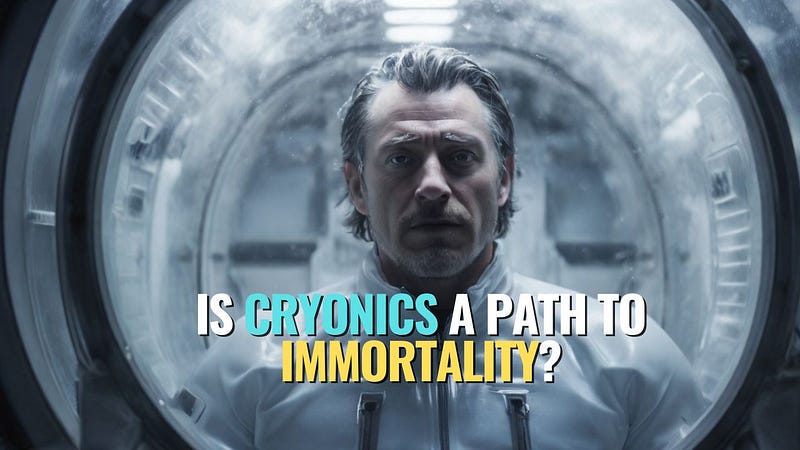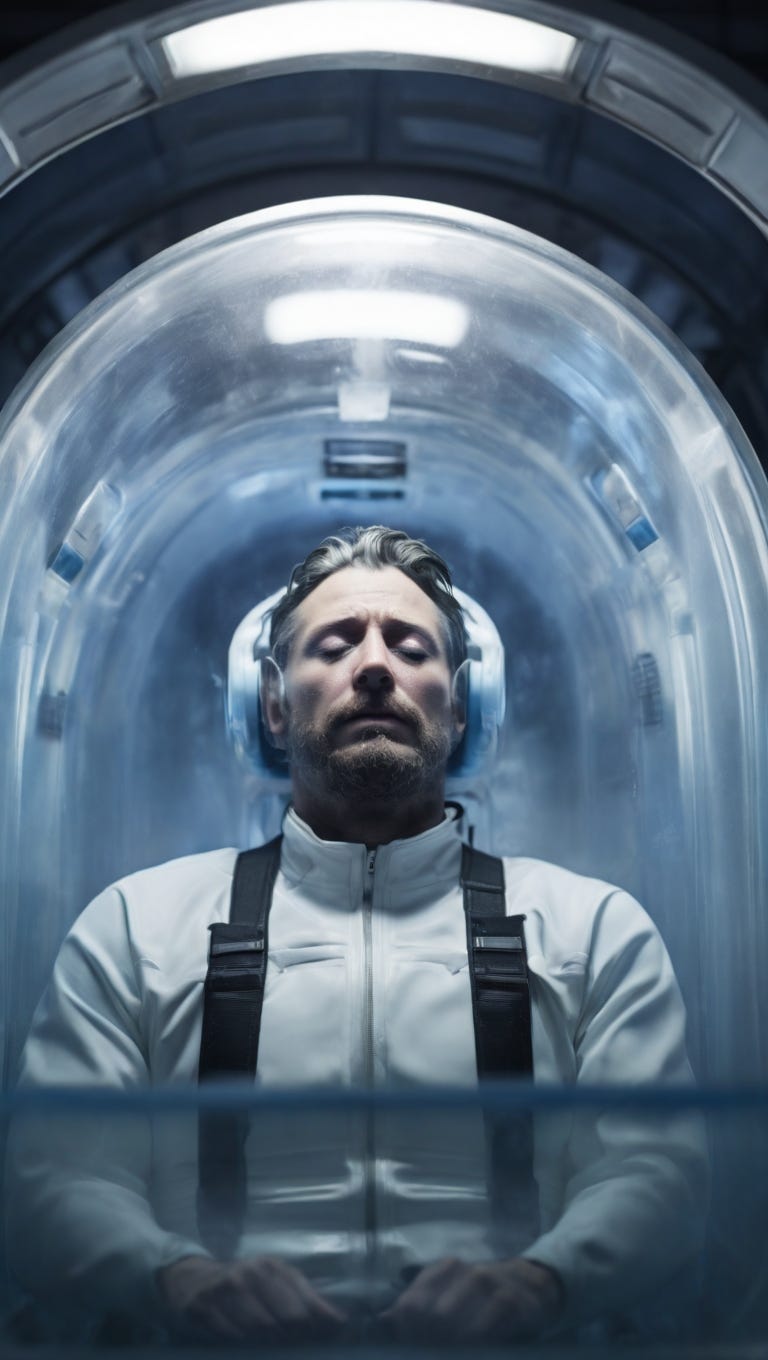The Pursuit of Immortality: Exploring Cryonics and Its Implications
Written on
Chapter 1: Understanding Cryonics
Cryonics presents a fascinating opportunity for extending human life, even aspiring toward immortality. Each year, a number of individuals choose to entrust their bodies or brains to specialized organizations that offer “freezing” services. Despite the allure, there remains a significant lack of conclusive evidence supporting the efficacy of this approach. While several people have undergone cryopreservation, none have yet been revived from this state.

Medicine is progressing at an extraordinary rate. Just a few decades ago, cancer diagnoses often spelled doom, with little hope for recovery. However, advancements in medication, radiation therapy, and surgical techniques have led to substantial increases in patient lifespans. Similarly, developments in HIV treatment have transformed outcomes for many. This progress sparks curiosity among patients seeking methods to prolong their lives, with cryonics being one of the avenues explored.
The first video title is "Frozen Faith: Cryonics and The Quest to Cheat Death." This video explores the ethical dilemmas and scientific foundations behind cryonics, offering insights into why some individuals choose this path.
Section 1.1: The Concept of Cryonics
For many years, the idea of freezing humans has captivated filmmakers and authors alike. What was once relegated to the realm of science fiction is now being pursued as a genuine possibility. The first human to experience cryopreservation was James Hiram Bedford, a psychology professor who passed away from kidney cancer on January 12, 1967. Upon his death, he allocated $100,000 to advance research in cryonics, allowing his body to be preserved by the Life Extension Society, the first organization dedicated to this field. Although the initial preservation methods were primitive, advancements have led to improved techniques, inviting more people to consider waiting in this state until potential cures for their ailments become available.
When discussing cryonics, it's essential to understand that the process involves cooling the body to nearly -200 degrees Celsius for potential indefinite preservation. This procedure aims to halt biological decay until medical innovations can address the underlying conditions that caused death. Contrary to popular belief, cryonics is not merely freezing; it focuses on preventing ice crystal formation within tissues, thereby enhancing the chances of preserving their structural integrity.

Section 1.2: The Mechanics of Cryopreservation
Cryonics research was initially met with skepticism from the scientific community, which deemed it unethical and misleading. However, the 21st century has seen an increase in companies offering cryonic services, each employing unique methods for cooling the body—methods they often keep confidential. Generally, the procedures follow similar principles.
Cryopreservation must occur shortly after death. Prior to this, several preparatory actions are taken. First, blood circulation is restored to supply oxygen to the tissues. Next, agents are introduced to halt post-mortem processes, followed by cryoprotectants that prevent ice formation. The body is then gradually cooled using liquid nitrogen, reaching a temperature of -196 degrees Celsius to induce cryostasis, stopping all chemical reactions that would normally occur at higher temperatures. While the body may be considered deceased, its biological cells retain the potential for life.
The body is then placed into a specialized capsule designed to maintain extremely low temperatures, positioned head-down to minimize damage to vital organs in case of a containment failure.
Despite the longstanding presence of cryonics technology, the revival of individuals post-cryopreservation remains uncharted territory. It is currently unknown whether a person can regain life functions after being frozen, even if medical advancements allow for the treatment of the original cause of death. Experts predict that it may take an additional 20 to 30 years before we have clarity on the feasibility of reviving cryopreserved individuals.
The second video title is "Cryonics: Freezing Humans For Future Revival | Connecting The Dots." This video discusses the scientific and ethical implications of cryonics, exploring whether this method can indeed offer a second chance at life.
Chapter 2: Legal and Ethical Considerations
Legally, the freezing of a living person is prohibited worldwide, even with their consent. However, once an individual has passed away, the process of cryopreservation can be initiated. Individuals with substantial financial means can partake in this pursuit of life extension, with the costs ranging from tens to hundreds of thousands of dollars, often requiring services from companies based abroad.
Dear Readers
I wish to bring attention to a pressing issue that affects content creators like myself on Medium.com. Despite dedicating significant effort to crafting valuable content, the compensation we receive is often minimal. If you appreciate my articles, please consider supporting me on my "Buy Me a Coffee" page. Your contributions, regardless of size, can inspire me to continue producing engaging and thought-provoking content. Thank you for being part of this journey!

